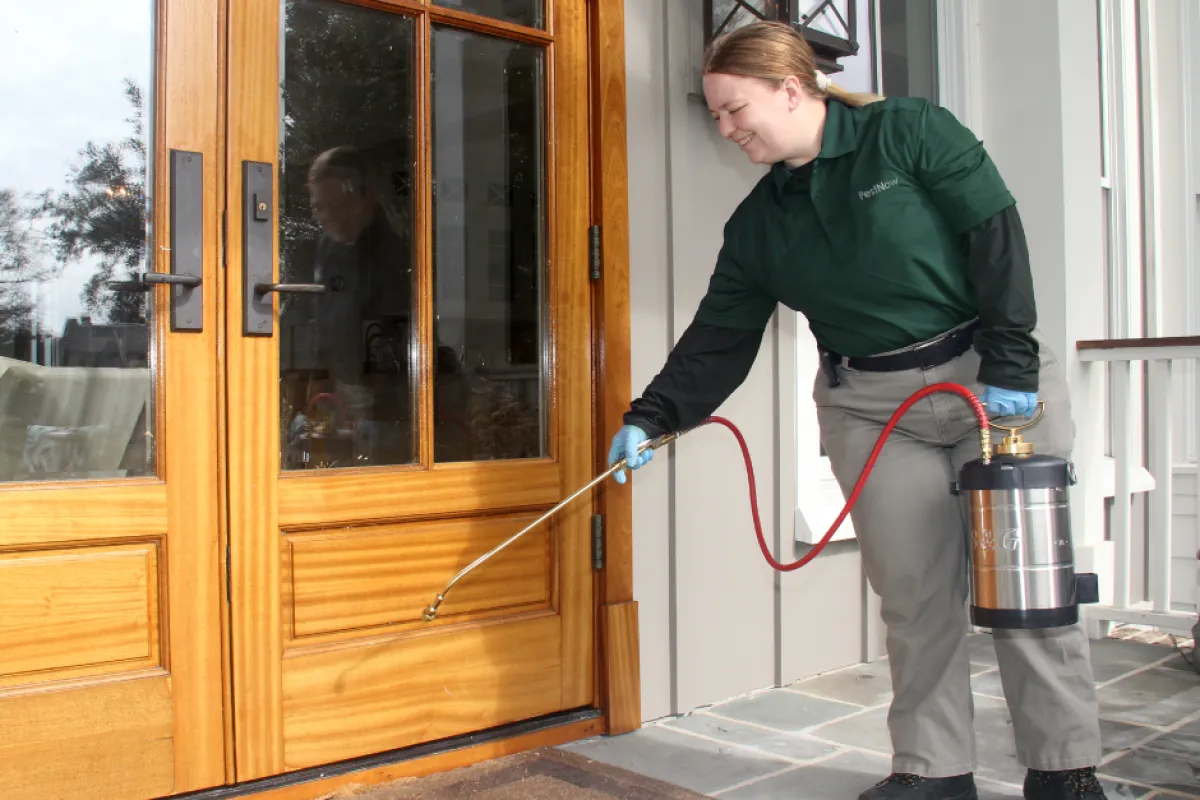Trusted A1 Bed Bug Exterminator Charlotte - Eliminate Bed Bugs Fast
Wiki Article
Bed Pest Treatment Break Down: Comparing Chemical Vs. Non-Chemical Solutions
In the realm of parasite control, especially when taking care of the relentless problem of bed insects, the selection in between chemical and non-chemical treatment remedies can be an essential one. Both strategies use distinct advantages and disadvantages, affecting factors such as performance, security considerations, and total cost. By analyzing the nuanced information of each technique, a more clear understanding of which course to pursue in addressing a bed pest infestation can be obtained.Performance of Chemical Treatments
Chemical treatments for bed insect problems have actually been commonly acknowledged for their rapid and potent efficiency in getting rid of these insects. When taking into consideration the effectiveness of chemical treatments, it is critical to understand that they can provide a complete and quick option to a bed insect problem. Specialist pest control specialists usually count on pesticides to target bed bugs at various stages of their life process, consisting of grownups, eggs, and nymphs. These chemicals normally function by interrupting the bed pests' anxious system, leading to paralysis and eventual fatality.Furthermore, chemical treatments have the benefit of providing residual effects, indicating that they can remain to remove bed pests also after the first application. This recurring action is particularly valuable in combating any type of possible re-infestations. Additionally, the rapid activity of chemical therapies can bring relief to individuals encountering severe bed insect problems, allowing them to gain back control of their home rapidly.
Safety Interest In Chemical Solutions
One important facet that needs careful factor to consider when utilizing chemical remedies for bed insect therapy is ensuring the safety and security of residents and the environment. While chemical treatments can be effective in removing bed insects, they might present dangers otherwise dealt with properly. Among the key safety and security interest in chemical solutions is the potential injury they can trigger to human health and wellness. Direct exposure to specific chemicals used in bed pest therapies can result in breathing problems, skin inflammation, or other negative responses, particularly in people with pre-existing conditions or level of sensitivities. Additionally, inappropriate application or dosage of chemical pesticides can cause toxic residues lingering in the cured location, presenting lasting wellness threats to owners.Furthermore, the ecological impact of chemical services is an additional substantial consideration. Some chemicals utilized in bed pest therapies might be unsafe to beneficial insects, wild animals, and ecological communities if they leach right into the soil or water systems. It is vital to utilize chemical treatments deliberately, adhering to security standards, and taking into consideration much less harmful options to mitigate these dangers and make certain the efficient and secure monitoring of bed bug problems.
Advantages of Non-Chemical Techniques
Considering the potential security issues and ecological influence related to chemical solutions for bed insect therapy, checking out non-chemical approaches provides an appealing choice with several distinct benefits. Non-chemical methods provide a safer choice for households, specifically those with pets, individuals, or children sensitive to rough chemicals. These methods get rid of the threats of exposure to harmful substances, reducing the potential for adverse health and wellness impacts. Furthermore, non-chemical therapies are eco-friendly, as they do not contribute to air or water air pollution, making them a lasting choice for parasite control.In addition, non-chemical remedies can be effective in targeting bed insects, including hard-to-reach locations where chemical therapies might not pass through. Techniques such as warm treatment, vacuuming, vapor cleaning, and cushion encasements supply complete removal without making use of harmful chemicals. Additionally, non-chemical strategies can be less turbulent, needing minimal prep work and enabling quicker reentry into treated areas. On the whole, opting for non-chemical bed bug treatment methods not only focuses on safety and ecological protection but also guarantees extensive and efficient insect control.
Limitations of Non-Chemical Treatments

Furthermore, non-chemical therapies frequently call for several applications to accomplish effective obliteration. This can be time-consuming and might not constantly ensure full elimination of all bed bugs and their eggs, especially in covert or hard-to-reach places.
Additionally, the success of non-chemical therapies heavily counts on correct application and thoroughness, which can be testing for individuals without specialist expertise. Inadequate application of non-chemical methods may cause insufficient elimination, bring about consistent infestations and the demand for added therapies.
Therefore, while non-chemical therapies have their benefits, it is vital to acknowledge these limitations and consider them when determining the most effective approach for taking care of bed pest problems.
Cost Comparison: Chemical Vs. Non-Chemical Options
Given the constraints connected with non-chemical treatments, an essential aspect to examine in the context of bed bug monitoring is the price comparison in between chemical and non-chemical choices. In comparison, non-chemical treatments like warmth treatment or vapor can be more expensive, with prices ranging from $1,000 to $6,000 for a whole home. While the preliminary price of chemical therapies may seem reduced, numerous treatments might be needed to completely eradicate the invasion, possibly enhancing the overall cost.Conclusion

Taking into consideration the potential look at this web-site safety and security issues and environmental influence linked with chemical remedies for bed pest therapy, discovering non-chemical methods presents an encouraging choice with numerous distinct advantages.Offered the limitations associated with non-chemical treatments, a crucial element to examine in the context of bed bug monitoring is the price contrast in between chemical and non-chemical choices. In contrast, non-chemical treatments like heat therapy or steam can be extra expensive, with expenses varying from $1,000 to $6,000 for an entire home. While the initial cost of chemical treatments may appear lower, several therapies might be called for to completely eliminate the problem, potentially increasing the general expense.In verdict, when comparing chemical and non-chemical bed pest treatment choices, it is crucial to consider efficiency, safety, benefits, limitations, and price.
Report this wiki page